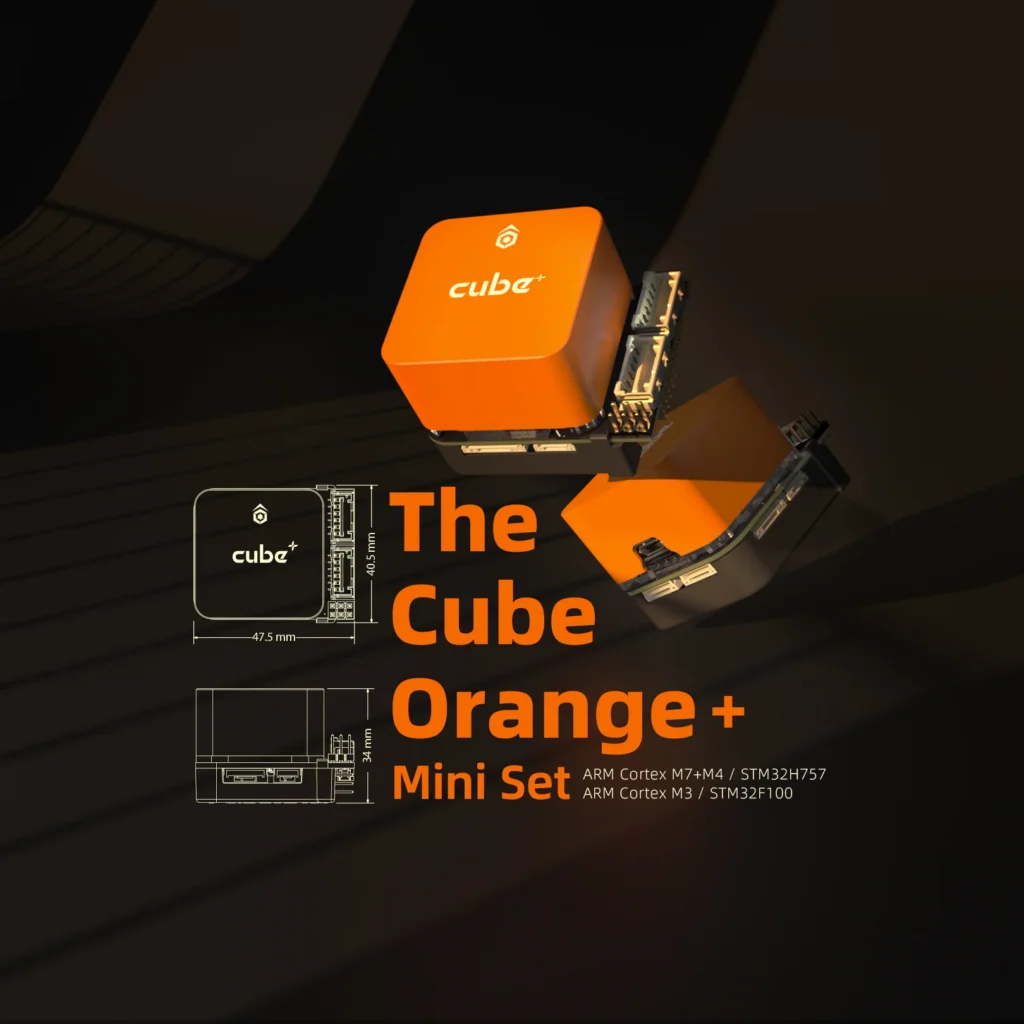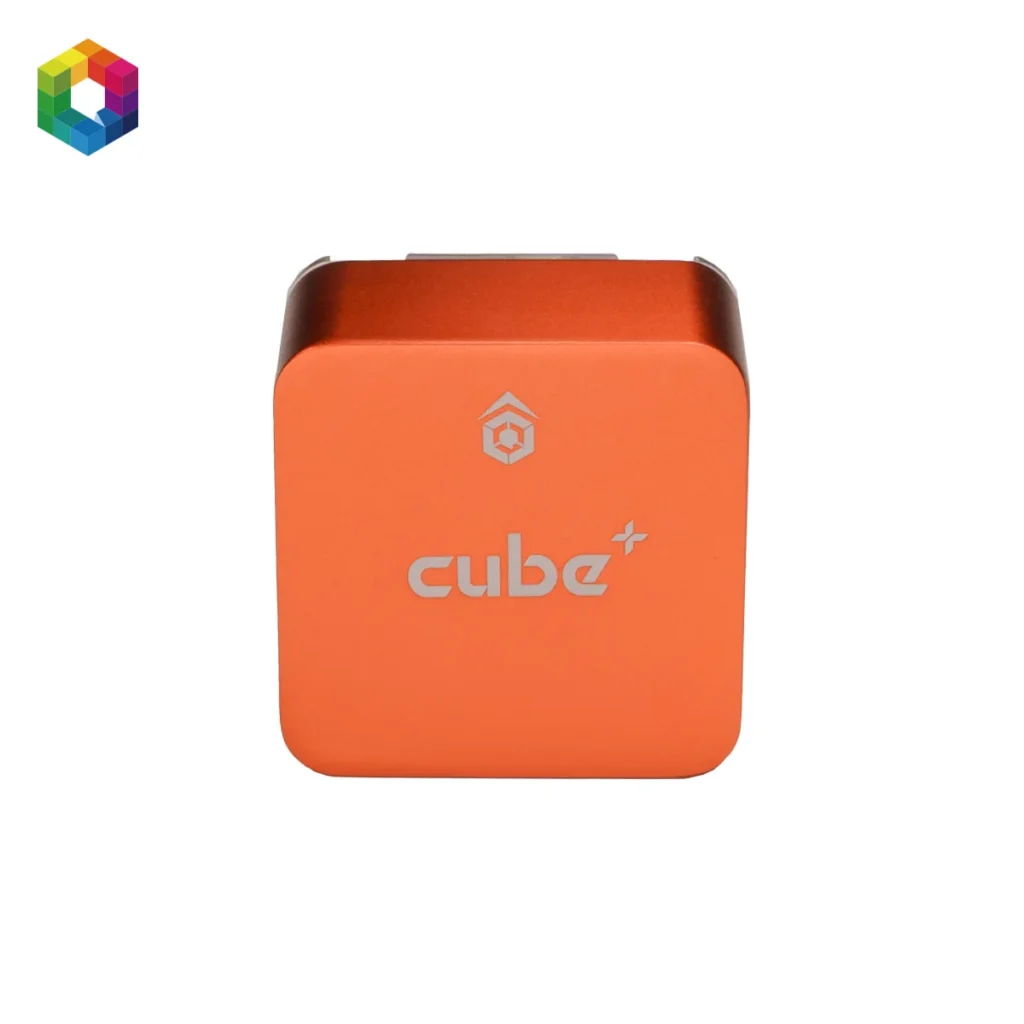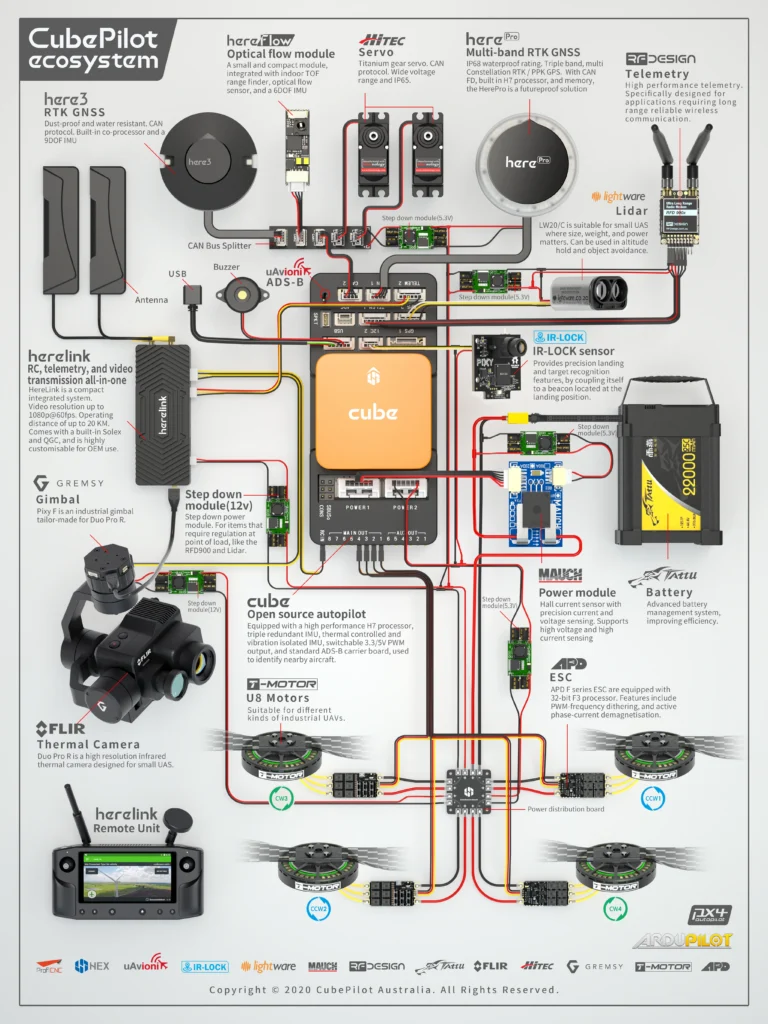No products in the cart.

CubePilot Autopilots – The Gold Standard “Brain” for Your Drone
CubePilot Autopilots
When it comes to drone autopilots, CubePilot’s “Cube” series stands out as one of the best in the industry. These cube-shaped flight controller modules have earned a stellar reputation for their innovation, reliability, and open-source flexibility. Here, we’ll explore what makes CubePilot autopilots so good and why you might consider one as the “brain” of your next UAV project.

CubePilot Proven Performance and Reliability:
At the heart of CubePilot’s philosophy is redundancy for safety. Most Cube autopilots (like the popular Cube Orange+) contain triple redundant IMUs – essentially three sets of accelerometers/gyros, as well as dual barometers, all within the module. These sensors are even temperature-controlled and vibration-isolated, meaning the Cube actively maintains optimal conditions to get accurate readings. Why does this matter? It means your drone can better handle real-world factors like temperature swings or motor vibrations without losing its “sense of balance.” If one sensor drifts or fails, the others take over, drastically reducing the chance of a random fly-away or crash due to sensor error. This level of fault-tolerance is usually found only in very high-end flight control systems, yet CubePilot delivers it in a compact module available to everyone.

Cutting-Edge Technology and Features
CubePilot isn’t content with “good enough.” They are continually pushing the envelope of autopilot tech. Let’s look at some features:
1. High-Performance Processors: The latest Cube models run on 32-bit ARM Cortex H7 microcontrollers, which are significantly faster than previous generations. The Cube Orange+ uses a 400 MHz H7 with a companion 200 MHz co-processor, giving it ample power to handle complex algorithms, fast control loops, and additional tasks like onboard logging or companion communication. In practice, this means smoother control, the ability to run advanced features (like object avoidance or smart flight modes), and headroom for future firmware enhancements.
2. ADS-B Aircraft Detection: Some Cube sets (Cube Orange+ standard set) come with an ADS-B In receiver integrated on the carrier board allows the drone to pick up signals from manned aircraft (like airplanes or helicopters) that broadcast their position. Your drone’s autopilot can then alert you or even autonomously take evasive action if a conflict is detected. In an era where airspace is getting busier, having built-in air traffic awareness is a huge plus for safety. CubePilot partnered with aviation tech company uAvionix to include this feature, showing how they stay ahead in safety features.
3. Advanced I/O and Expandability: Cube autopilots come with a multitude of inputs/outputs. Typically, you get 14 PWM outputs for motors/servos, multiple serial ports (MAVLink telemetry, GPS, etc.), CAN bus ports for smart peripherals, I2C, SPI, USB, and more. What does this mean? It means a Cube can interface with almost any drone component or payload you can think of – from Lidar sensors to camera gimbals to parachute systems. And with standardized connectors and port definitions, adding new hardware is often plug-and-play. The Cube’s carrier board system further allows custom PCB designs; if the default port arrangement doesn’t suit you, you can create a carrier board that does, while still leveraging the same Cube module. This modular approach is a standout feature – you’re not stuck with a one-size-fits-all board
4. Open-Source Firmware (ArduPilot & PX4): All CubePilot autopilots run open-source flight control software – primarily ArduPilot (Copter, Plane, etc.) or PX4. This is a big deal for performance and customization. These firmware platforms are packed with features: waypoint navigation, autonomous takeoff/landing, follow-me modes, terrain following, and geofencing, to name a few. You can tweak parameters to fine-tune flight characteristics or add your own scripts to extend functionality. Because it’s open-source, there’s a massive community of developers and users who contribute improvements and new features. The Cube’s hardware is a perfect enabler for this – its abundant processing power and memory allow developers to cram in sophisticated algorithms (for example, ArduPilot has a robust EKF for sensor fusion that benefits from the Cube’s IMU array and CPU power). For an end user, using a Cube autopilot means you’re tapping into one of the most evolved and proven software stacks in the drone world, and you’re free to modify it to your needs.
5. NDAA Compliance Options: For those concerned about regulations and origin of components (such as U.S. government or defense projects), CubePilot offers Cube Blue and certain “Made in USA” editions of their hardware. These are functionally equivalent to the standard versions but manufactured in approved facilities. It’s a feature in a broader sense – a feature of the business model that CubePilot can support sensitive use-cases. Not many autopilot makers provide this level of supply chain transparency

CubePilot Autopilots: Real-World Excellence
All the specs in the world don’t matter if the autopilot doesn’t deliver in real missions. Fortunately, CubePilot’s reputation in the field is excellent. Here are some real-world scenarios where Cube autopilots shine:
Commercial Drone Integration: Many drone integrator companies use CubePilot in their products. For example, a popular crop-spraying drone model might use a Cube Orange as its flight controller, leveraging its precise GPS and stable flight control to navigate farms automatically. The consistency and reliability Cube provides are crucial when a drone is carrying 10+ liters of liquid over crops with exact dosing requirements. One misstep could be costly, so these companies choose Cube to get accurate and dependable flight performance.
Research and Academia: Universities and labs love Cube autopilots because they can tinker with them. If researchers are testing a new control algorithm or an AI co-pilot system, they often use a Cube running PX4/ArduPilot as the baseline, then add a companion computer to inject their experiments. The open architecture lets them tap into the flight controller data easily via MAVLink. And the robust failsafes and manual override of the Cube ensure that even if their experimental code glitches, the Cube can keep the aircraft safe. In short, Cube is a trusted platform for innovation.
Long Range and BVLOS Flights: For delivery drones or long-range survey missions (Beyond Visual Line of Sight – BVLOS), you need an autopilot that can handle loss of comms gracefully, navigate precisely, and integrate with redundant systems (like redundant GPS or detect-and-avoid sensors). Cube autopilots have proven adept at this. With dual GPS inputs available, one can plug in two GNSS receivers (some put one Here3 and one Here4, for example, or one GPS and one GLONASS-focused unit), and ArduPilot will blend them, further reducing the chance of a navigation loss. Coupled with battery monitoring, geofence failsafes, and even engine failure detection in ArduPilot, a Cube-based drone can be programmed to safely return home or loiter if something goes wrong beyond radio range. This reliability and intelligence are why Cube is found in many long-distance drone platforms.
High-Precision Mapping: When doing aerial mapping or LiDAR scanning, drones often need very stable flight and precise triggering of cameras. Cube autopilots excel here due to their smooth control (thanks to fast loop rates and good sensor fusion) and the ability to integrate camera triggers or hotshoe feedback. For instance, using a Cube with a Here RTK GPS can allow a mapping drone to tag each photo with GPS coordinates at centimeter-level accuracy. The Cube can directly interface with camera triggers to ensure synchronization. The result is high-quality data for maps or 3D models. Many mapping professionals consider a Pixhawk/Cube with RTK GPS as a more affordable alternative to buying a vastly more expensive proprietary system – and they often get comparable results.

Why CubePilot Autopilots are Top-Tier
To sum it up, CubePilot autopilots have earned their gold-standard status. They combine robust hardware (redundant sensors, powerful processors) with flexible, feature-rich software (open-source ArduPilot/PX4) and wrap it in a modular, user-friendly package. Whether you’re a hobbyist aiming to build a reliable quadcopter or a company designing the next autonomous delivery drone, the Cube can scale to your needs. It’s no surprise that it’s called “the Cube”, it’s literally the building block for drones in the eyes of many UAV enthusiasts and professionals.
If you’re looking to upgrade your drone’s brain, CubePilot is a wise choice. It’s a platform backed by a decade of development and a global community. You’ll benefit from the collective knowledge that has gone into making drones fly better and safer. In the fast-evolving world of unmanned systems, CubePilot autopilots offer a rare combination of maturity and innovation – truly the best of both worlds.
Sources:
The Cube Orange/+ With ADSB-In Overview — Copter documentation